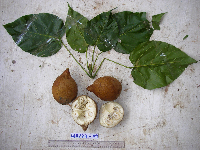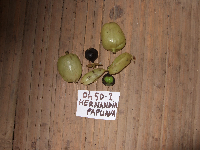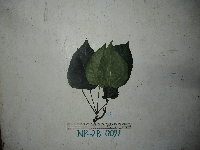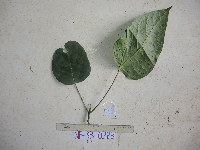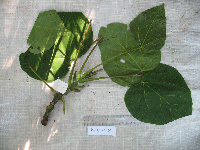University of Minnesota
http://www.umn.edu/
612-625-5000
http://www.umn.edu/
612-625-5000
Minnesota Biodiversity Atlas
Bell Museum
Dataset: NGBRC
Taxa: Hernandiaceae
Search Criteria: excluding cultivated/captive occurrences
1
Page 1, records 1-7 of 7
Plant records from the New Guinea Binatang Research Center | |
NGBRC | Ctvrtecka2407[]Ctvrtecka, R. 24072008-09-29 Papua New Guinea, Madang Province, Wanang, -5.23088 145.182, 115m |
NGBRC | Ctvrtecka0112[]Ctvrtecka, R. 01122008-03-05 Papua New Guinea, Madang Province, Ohu, -5.21667 145.683, 100m |
NGBRC | NP2B0097[]Binatang Research Center NP2B00972014-09-08 Papua New Guinea, Madang, Numba, -5.7222 145.2714, 1200m |
NGBRC | NP3B0223[]Binatang Research Center NP3B02232014-06-23 Papua New Guinea, Madang, Numba, -5.7222 145.2714, 1200m |
NGBRC | NS4A0218[]Binatang Research Center NS4A02182014-02-07 Papua New Guinea, Madang, Numba, -5.7222 145.2714, 1200m |
NGBRC | PC4E0172[]Binatang Research Center PC4E01722008-09-03 Papua New Guinea, Madang Province, Wanang, -5.2243 145.07235, 115m |
NGBRC | PC5A0235[]Binatang Research Center PC5A02352008-09-04 Papua New Guinea, Madang Province, Wanang, -5.2243 145.07235, 115m |
1
Page 1, records 1-7 of 7
Google Map
Google Maps is a web mapping service provided by Google that features a map that users can pan (by dragging the mouse) and zoom (by using the mouse wheel). Collection points are displayed as colored markers that when clicked on, displays the full information for that collection. When multiple species are queried (separated by semi-colons), different colored markers denote each individual species.
